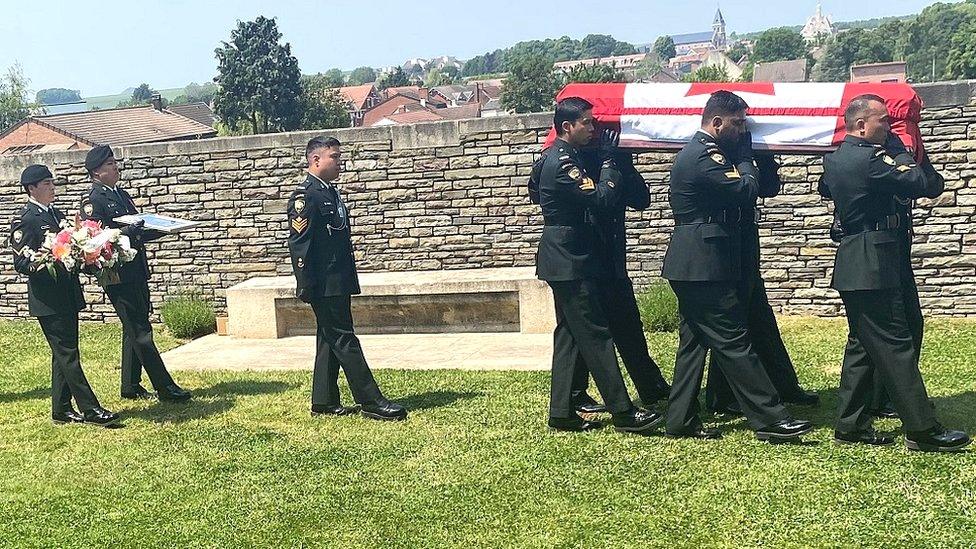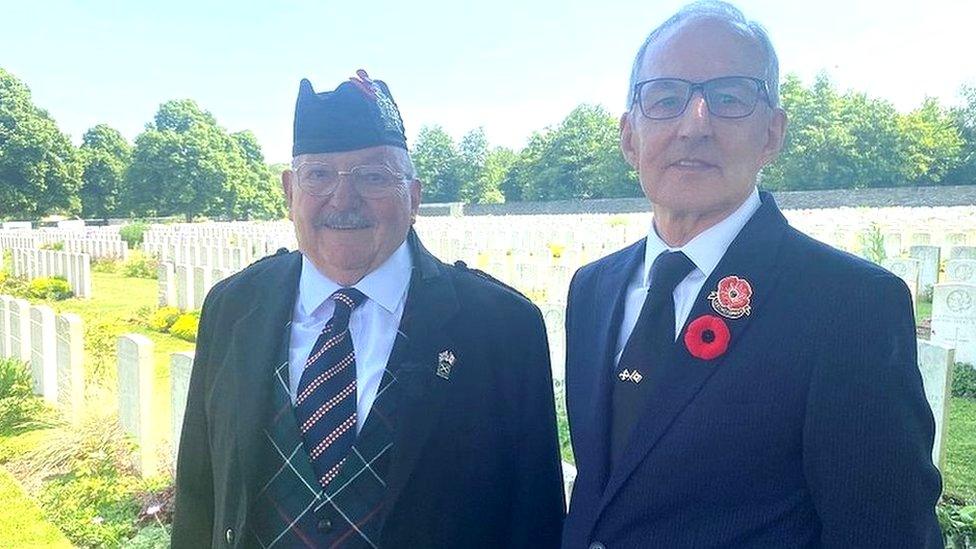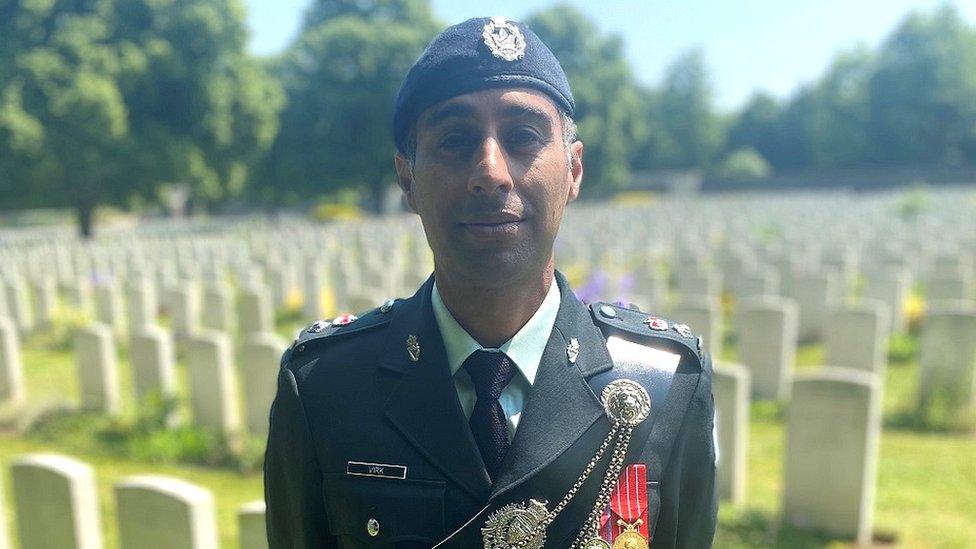Langholm soldier Richard Musgrave laid to rest more than 100 years on
- Published

Sgt Richard Musgrave was buried with full military honours
A Scottish World War One soldier has been buried with full military honours more than 100 years after he died.
Sgt Richard Musgrave, from Blackrigg, near Langholm, was killed during the Battle of Hill 70 in August 1917.
His remains were uncovered - alongside a military medal ribbon and other items - during munitions clearing work near Lens in France a century later.
A range of techniques - including DNA tests - confirmed his identity and his family attended the burial.
Sgt Musgrave signed up for service in Canada in 1915 after he had travelled to Calgary as a stables groom to deliver horses.
He went missing at the start of the Battle of Hill 70 which resulted in thousands of casualties among the Canadian Expeditionary Force.

Great-nephews Jim Coltman and Gordon Gilfeather from Hawick attended the ceremony
Almost exactly 100 years later a skeleton was found in the area and a range of scientific and archaeological techniques ultimately confirmed it was the Scottish soldier.
Sgt Musgrave was awarded the Military Medal for his bravery in April 1917 when he led his platoon under heavy fire at the Battle of Vimy Ridge.
Members of his family - including great-nephews Jim Coltman and Gordon Gilfeather from Hawick - travelled for the burial at the Loos British Cemetery in France.
Mr Coltman said he had been aware of the story his entire life.

Richard Musgrave was awarded the Military Medal for his bravery
"He was killed leading his men on Hill 70 in 1917," he said.
"His photo was up on my granny's wall ever since I was a wee boy. And every Armistice Day she would place a new poppy on the border so I knew this man was important.
"Later in life, of course, I realised who he was and got the story."
Mr Gilfeather said seeing his relative buried was an emotional moment.
"It is very poignant, it is sad but it is nice to feel that he is finally being laid to rest in a proper cemetery beside his comrades," he said.

Forensic anthropologist Sarah Lockyer said Sgt Musgrave was identified from a variety of clues
Sarah Lockyer, forensic anthropologist, described how Sgt Musgrave was able to be identified.
"With the remains were found a number of artefacts that gave us some clues as to who this could be," she said.
These included a whistle - showing he was not a private - and cap badges and a military medal ribbon.
"When we combine that with the biological information - this individual was over 30 years old and between 4ft 11in (1.5m) and 5ft 3in (1.6m) - there was only one candidate who fitted all of those criteria," she said.
"And that was only Sgt Richard Musgrave."

Lt Col Vincent Virk informed the family of the discovery of Sgt Musgrave's remains
Lt Col Vincent Virk, commanding officer, British Columbia Regiment, said he had the "honour and somewhat nervous task" of informing the relatives of the find.
"I came to Scotland and I sat down with the family and I explained that we had found Sgt Musgrave and we have identified him and we are bringing him back," he said.
"There were tears at the table and we would talk and I found out I was sitting at the exact same table that he sat at because it was still the family home.
"That connection just bonds everyone together."
Related topics
- Published22 August 2017
